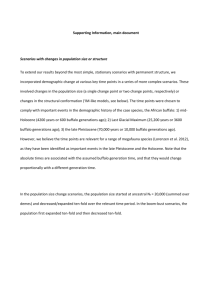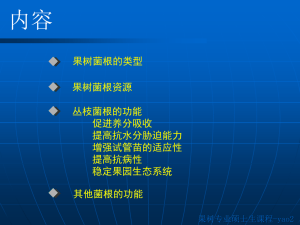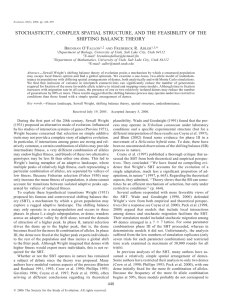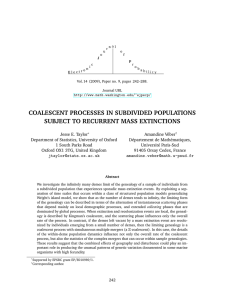README.
advertisement
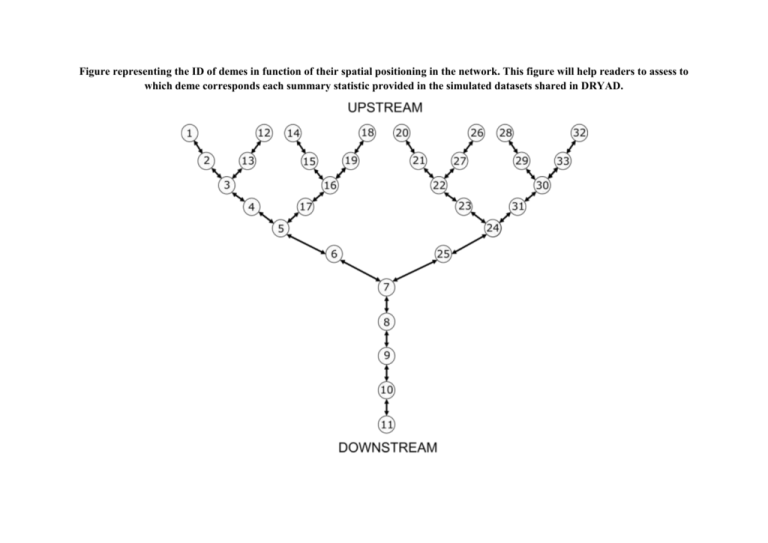
Figure representing the ID of demes in function of their spatial positioning in the network. This figure will help readers to assess to which deme corresponds each summary statistic provided in the simulated datasets shared in DRYAD. Table reporting the equivalences between the name of the parameters we used in the article and those we used in the .est and .par scripts we share in DRYAD (i.e., the scripts that were used to simulate genetic data with ABCSampler and SIMCOAL 2). We also report the description of the parameters and the prior parameter values we used. Model gene-flow habitat availability colonization gene-flow / habitat Parameter (article) Parameter (datafiles, .par and .est scripts) Description Prior parameter values NDEMES NDEMES Size of the demes (diploid individuals) 50; 1,000 or 10,000 PASYM A2 Asymmetry in dispersal rate 1 to 20 by 0.1 DDOWNSTREAM Maval Downstream-directed dispersal rate 0.01 to 0.3 by 0.01 NHEADWATER NDEMESK Size of the most upstream demes (diploid individuals) 50 to 500 by 5 PSCAL X Scaling parameter for calculating downstream demes sizes 1.0 to 1.5 by 0.1 DSYMMETRIC M Symmetric dispersal rate 0.01 to 0.3 by 0.01 NDEMES NDEMES Size of the demes (diploid individuals) 50; 1,000 or 10,000 DSYMMETRIC M Symmetric dispersal rate 0.01 to 0.3 by 0.01 TEND TFIN Time of the ending of the stepwise colonization (generations) 10 to 500 by 10 TCOLONIZATION X Time elapsed between each colonization step (generations) 5 to 100 by 5 PFRAC FRAC Fraction of individuals colonizing a new deme 0.1 to 0.3 by 0.1 NHEADWATER NDEMESK Size of the most upstream demes (diploid individuals) 50 to 500 by 5 PASYM A2 Asymmetry in dispersal rate 1 to 20 by 0.1 DDOWNSTREAM Maval Downstream-directed dispersal rate 0.01 to 0.3 by 0.01 gene-flow / colonization habitat / colonization gene-flow / habitat / colonization PSCAL X Scaling parameter for calculating downstream demes sizes 1.0 to 1.5 by 0.1 NDEMES NDEMES Size of the demes (diploid individuals) 50; 1,000 or 10,000 PASYM A2 Asymmetry in dispersal rate 1 to 20 by 0.1 DDOWNSTREAM Maval Downstream-directed dispersal rate 0.01 to 0.3 by 0.01 TEND TFIN Time of the ending of the stepwise colonization (generations) 10 to 500 by 10 TCOLONIZATION Y Time elapsed between each colonization step (generations) 5 to 100 by 5 PFRAC FRAC Fraction of individuals colonizing a new deme 0.1 to 0.3 by 0.1 NHEADWATER NDEMESK Size of the most upstream demes (diploid individuals) 50 to 500 by 5 PSCAL X Scaling parameter for calculating downstream demes sizes 1.0 to 1.5 by 0.1 DSYMMETRIC M Symmetric dispersal rate 0.01 to 0.3 by 0.01 TEND TFIN Time of the ending of the stepwise colonization (generations) 10 to 500 by 10 TCOLONIZATION Y Time elapsed between each colonization step (generations) 5 to 100 by 5 PFRAC FRAC Fraction of individuals colonizing a new deme 0.1 to 0.3 by 0.1 NHEADWATER NDEMESK Size of the most upstream demes (diploid individuals) 50 to 500 by 5 PASYM A2 Asymmetry in dispersal rate 1 to 20 by 0.1 DDOWNSTREAM Maval Downstream-directed dispersal rate 0.01 to 0.3 by 0.01 PSCAL X Scaling parameter for calculating downstream demes sizes 1.0 to 1.5 by 0.1 TEND TFIN Time of the ending of the stepwise colonization (generations) 10 to 500 by 10 TCOLONIZATION Y Time elapsed between each colonization step (generations) 5 to 100 by 5 PFRAC FRAC Fraction of individuals colonizing a new deme 0.1 to 0.3 by 0.1 NDEMES NDEMES Size of the demes (diploid individuals) 50; 1,000 or 10,000 DSYMMETRIC Maval AND Mamont Symmetric dispersal rate 0.01 to 0.3 by 0.01 null model
